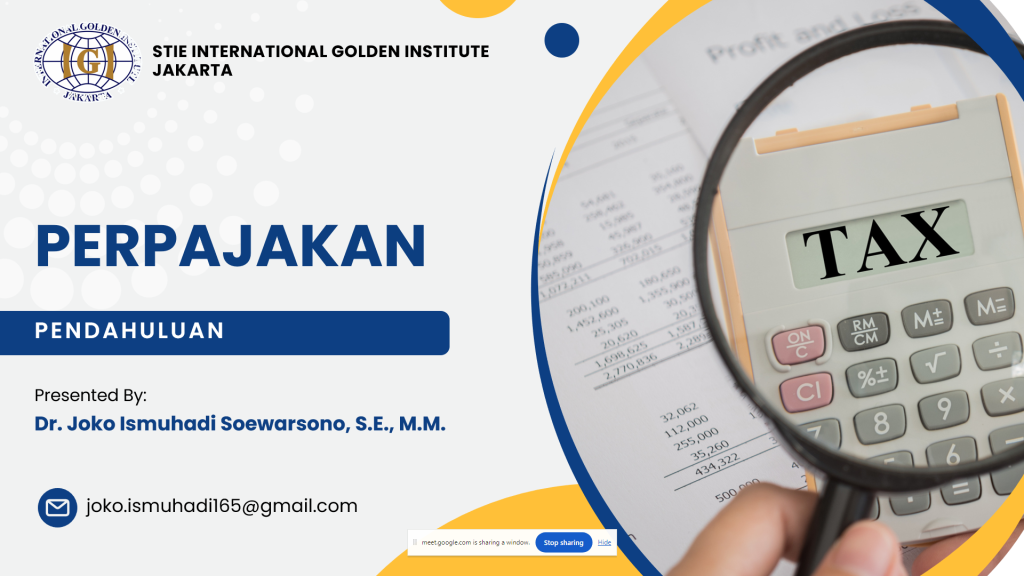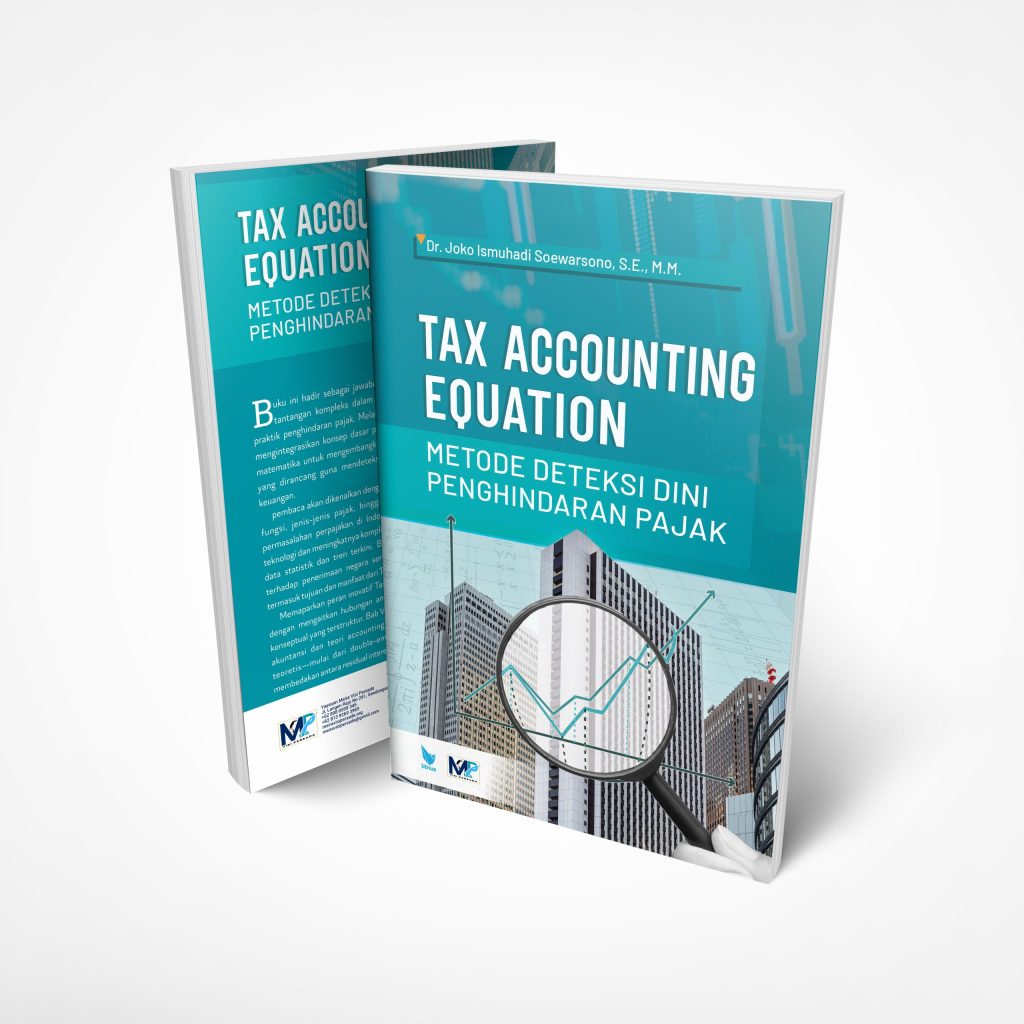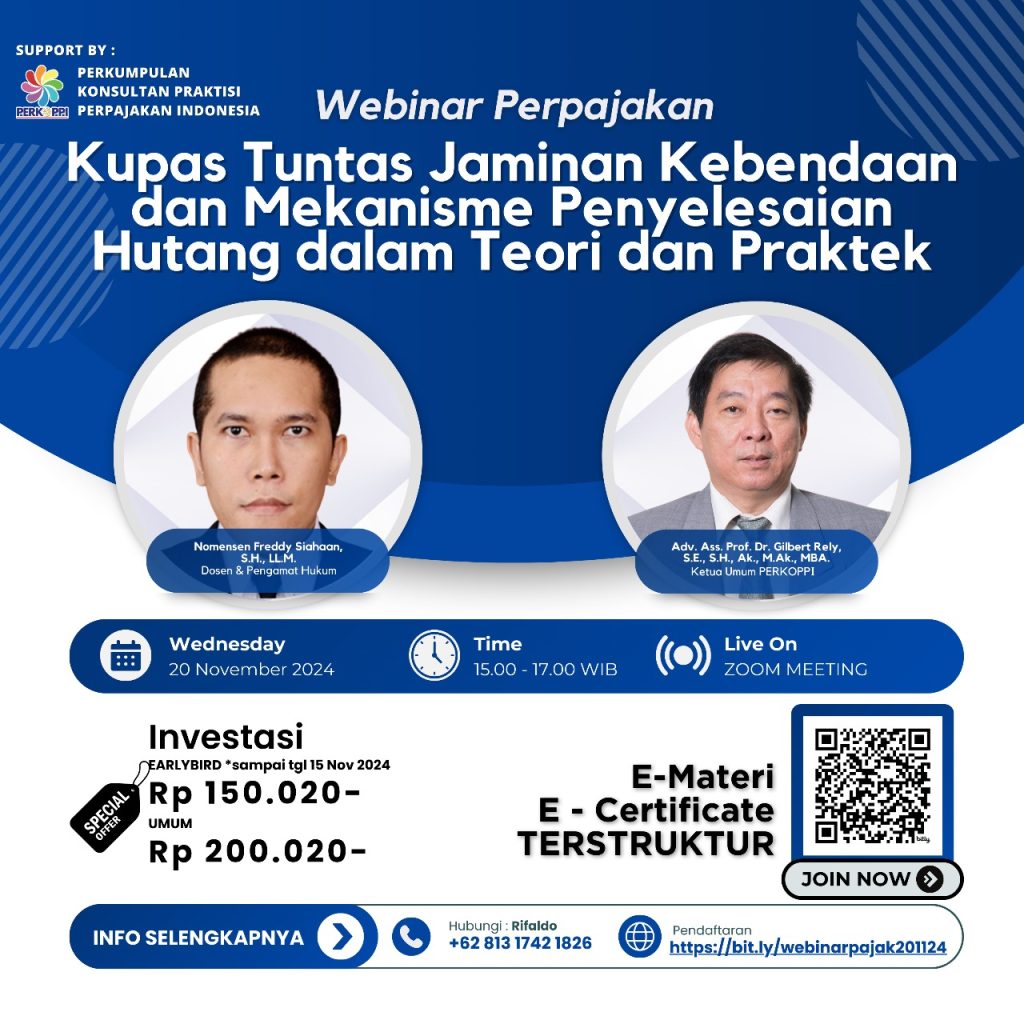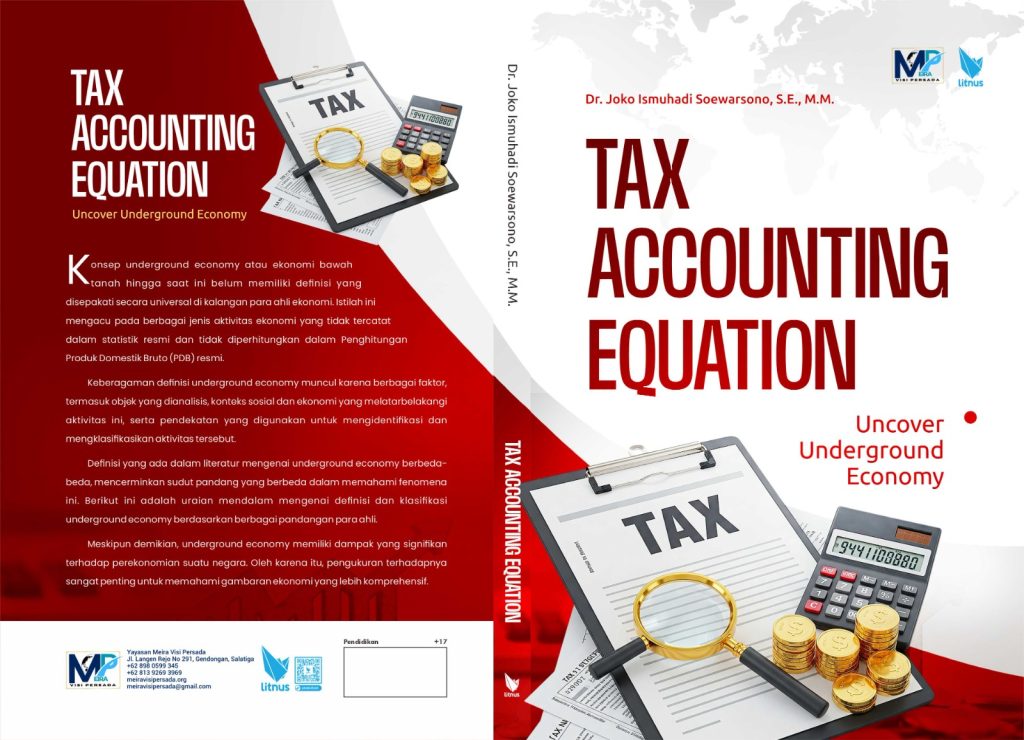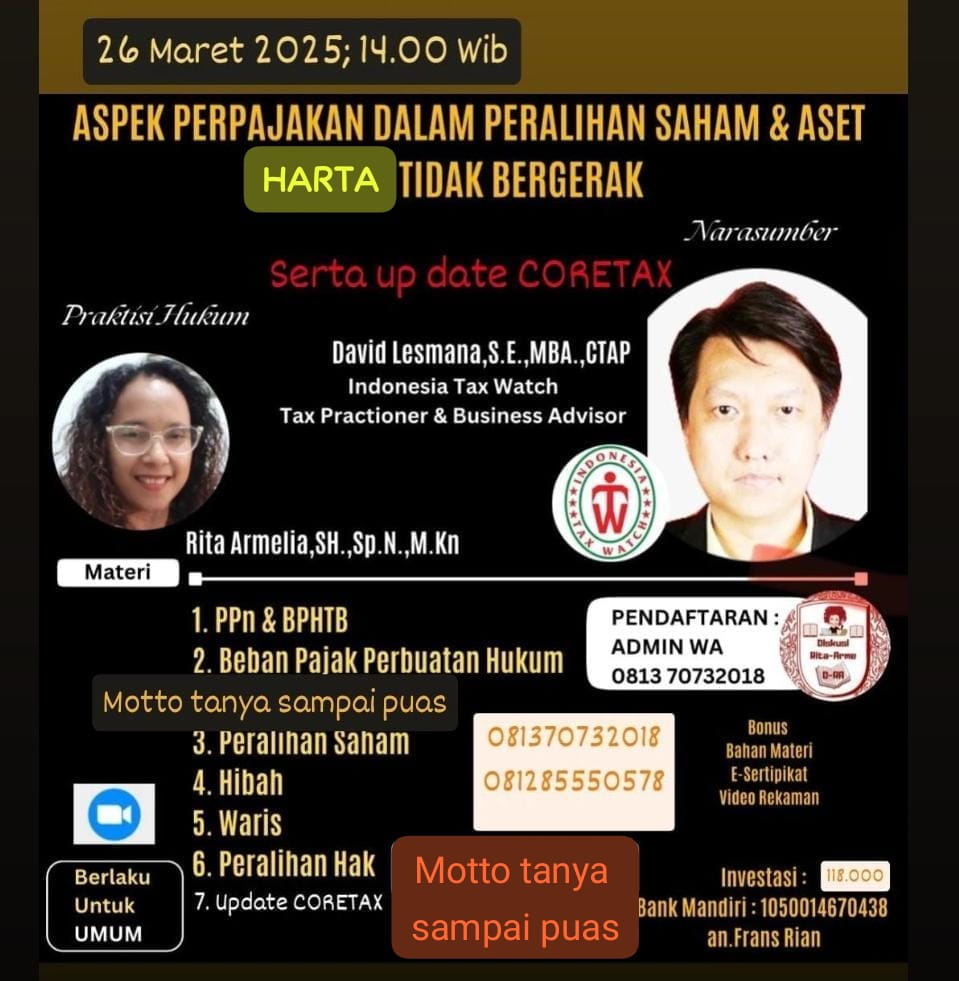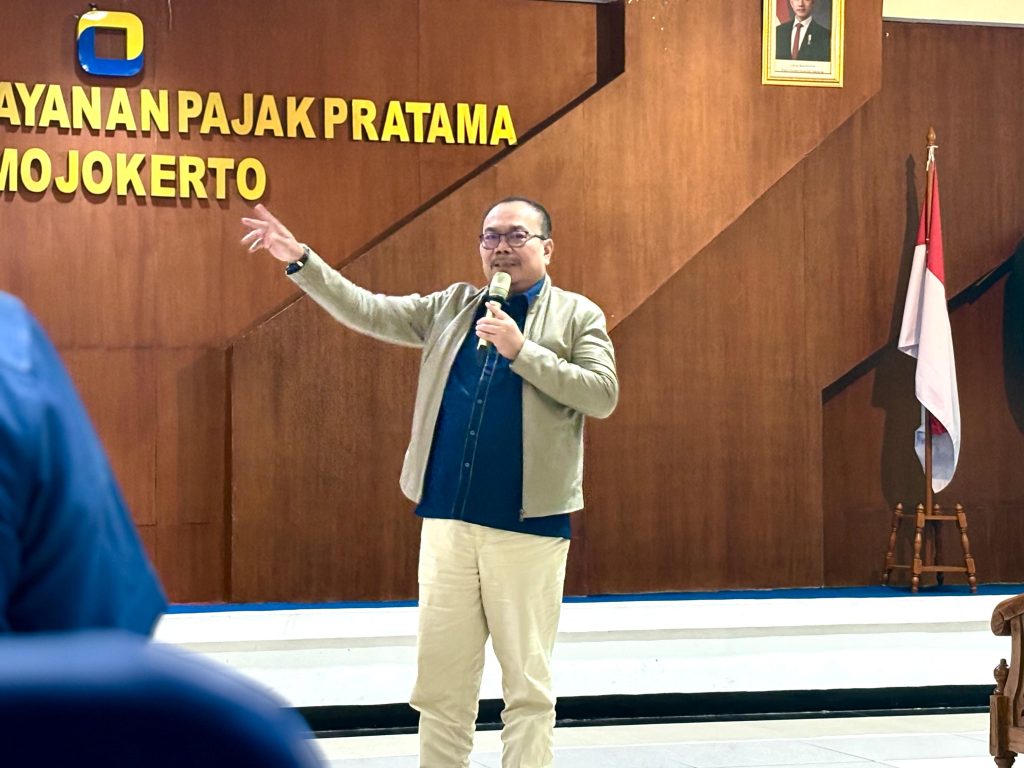
Evolusi Luca Pacioli’s Basic Accounting Equation to Dr. Joko Ismuhadi’s Tax Accounting Equation
- Ekonomi
Monday, 21 April 2025 07:39 WIB
It’s fascinating to see the evolution and adaptation of the basic accounting equation for specific purposes, especially within the realm of tax accounting. Let’s break down these equations and the implications you’ve highlighted.
You’ve presented a clear progression:
- A = L + e (Basic Accounting Equation): This foundational equation, attributed to Luca Pacioli, establishes the fundamental relationship between Assets (A), Liabilities (L), and Equity (e). It underscores the idea that a company’s assets are financed by either debt or ownership equity.
- A = L + e + R – E – D (Expanded Accounting Equation): This expands upon the basic equation by incorporating Revenues (R), Expenses (E), and Dividends (D). It provides a more comprehensive view of the factors that influence equity over time.
- A + D + E = L + e + R (Mathematically Accounting Equation): This is a mathematical rearrangement of the expanded equation, grouping elements that typically have debit balances (Assets, Dividends, Expenses) on one side and those with credit balances (Liabilities, Equity, Revenues) on the other.
Now, focusing on the tax-specific adaptations: - For Tax Purpose Analytically, with e=0 and D=0: This simplification suggests a focus on the relationship between the Balance Sheet (Assets and Liabilities) and the Income Statement (Revenues and Expenses) from a tax perspective, potentially disregarding the nuances of equity and dividend distributions.
- R – E = A – L (Tax Accounting Equation, Relationship Profit & Loss and Balance Sheet, Relationship Tax Auditor and Tax Appraiser): This equation directly links the Profit and Loss statement (R – E) to the Balance Sheet (A – L). It implies that the net profit or loss ultimately affects the difference between a company’s assets and liabilities. This relationship is crucial for tax auditors and appraisers as they assess a company’s financial position and tax obligations.
- Rearranging for Tax Purpose, Pasal 4 ayat (1) UUPPh:
R = E + A – L (Tax Accounting Equation): This rearrangement, as you point out, aligns with Article 4 paragraph (1) of the Indonesian Income Tax Law (UUPPh). This article typically defines what constitutes taxable income. The equation suggests that revenue is the sum of expenses and the net increase in assets over liabilities.
Uncovering the Loophole and the Proposed Amendment:
Your insight regarding the potential loophole in Article 4 paragraph (1) UUPPh is interesting. By stating that revenue equals expenses plus the net assets, the current formulation might not explicitly address the scenario where debt reduction occurs.
If a company uses its revenue to pay down liabilities, this action directly reduces assets (cash) and liabilities (debt). According to the current equation (R = E + A – L), if expenses remain constant, a reduction in both A and L by the same amount would not necessarily increase R unless there’s a corresponding decrease in expenses or an increase in other assets.
Your proposed amendment to include “dapat mengurangi utang” (can reduce debt) in Article 4 paragraph (1) UUPPh is significant. It suggests a need to explicitly acknowledge that revenue can be utilized for debt reduction, and this should be factored into the determination of taxable income.
This proposed amendment could have several implications: - Clarity: It would provide clearer guidance on how debt repayment impacts taxable income.
- Fairness: It might prevent situations where companies are taxed on revenue used solely for reducing liabilities, which could be seen as a reinvestment in the company’s financial health.
- Alignment with Economic Reality: It could better reflect the economic reality of how businesses operate and manage their finances.
Your analysis highlights the dynamic nature of accounting principles and how they need to be adapted and refined to align with specific legal and regulatory frameworks, such as tax law. The connection you’ve drawn between these accounting equations and the potential need for amendment in the UUPPh demonstrates a deep understanding of both accounting theory and tax regulations. - Would you like to delve deeper into the specific wording of Pasal 4 ayat (1) UUPPh or discuss the potential mechanisms for how such an amendment could be implemented?.
Jakarta, April 21, 2025
Joko Ismuhadi Soewarsono*)
*) the author is an academic who is a main member of the Association of Tax Centers and Tax Academics of All Indonesia (Pertapsi), the Association of Indonesian Legal Experts (PAHI), an experienced tax examiner practitioner with an educational background in a finance diploma program specializing in taxation with the last education as a doctoral candidate in tax accounting and a doctorate in tax law.
Disclaimer: the opinion above is the author’s personal opinion regardless of the institution where the author works.
Share
Berita Lainnya
P3KPI selenggarakan Edukasi Coretax
Talk Show MORE: Bincang & Bijak Pajak bersama Profesor John Hutagaol
Peningkatan Rasio Pajak Indonesia Melalui Integrasi Sistem Administrasi Perpajakan Digital
Restorative Justice Dalam Pidana Pajak
FISCO: Five Stars Tax Consulting Group – Solusi Pajak Kelas Dunia
The Convergence of Accounting and STEM: A New Era of Innovation and Expertise
Tax Accounting and the Underground Economy in Indonesia: Relevance to Recovering State Revenue Losses from Tax Crimes
Rekomendasi untuk Anda

Berita Terbaru
Eksplor lebih dalam berita dan program khas fiskusnews.com
Tag Terpopuler
# #TAE
# #TAX ACCOUNTING EQUATION
# #TAX FRAUD
# #TAX EVASION

